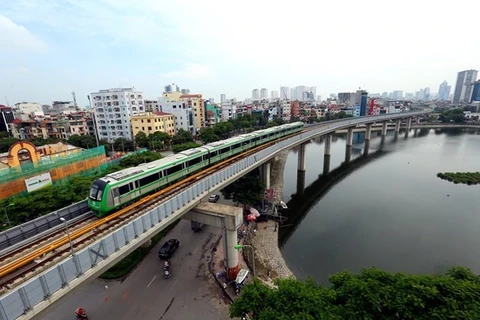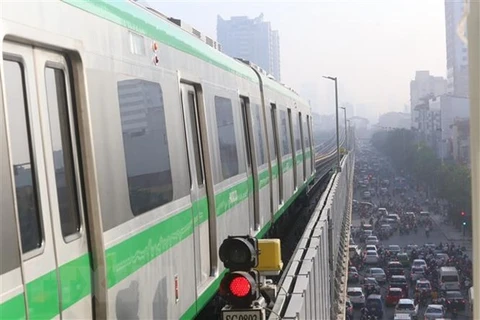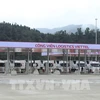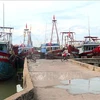According to Deputy Minister of Transport Nguyen Ngoc Dong, the project’s management board and the Metro Hanoi Company began checking, calculating, and receiving dossiers, documents, and assets on March 31. The work is expected to last from three to four weeks.
The ministry has directed relevant agencies and units to focus all resources on completing remaining works.
Dong said that the Cat Linh - Ha Dong project is the first urban railway line allowed to be piloted in Vietnam.
Vu Hong Phuong, acting Director of the project management board, pledged that the checking, calculation, and receipt of dossiers, documents, and assets will be completed in April.
Running from Cat Linh in Ba Dinh district to Ha Dong district and funded with Chinese ODA, the line has total investment of approximately 886 million USD, following several adjustments.
It has an elevated line of more than 13 km with 12 stations and 13 trains. Each train, whose designed speed is 80 km/h, has four carriages capable of carrying over 900 passengers.
The trial run was completed in December 2020, with more than 70,000 km of tests on thousands of trips, enabling the system to operate commercially.
This project, which commenced in October 2011, has suffered numerous setbacks and delays.
The Hanoi People’s Committee has announced the price of the tickets for the Cat Linh-Ha Dong metro, with the lowest one being 8,000 VND for a trip and 30,000 VND for a day pass.
A month pass for a common passenger is priced 200,000 VND.
Building transport infrastructure is hoped to help Hanoi’s outskirts areas develop and create the potential for modern urban development as there is less and less land available in the inner city.
According to the city's master plan, by 2030, Hanoi is set to have eight urban rail routes with a total length of 318km linking the central city with satellite and suburban cities.
The municipal authority plans to borrow about 40 billion USD to build the rail routes.
Initially, the city has focused on operating 20km of elevated railway and speeding up the construction progress of 4km of track and four underground stations of the Nhon Urban Railway.
Building urban railway lines is essential, but progress has been slow.
In 2018 in the guiding document for urban transport development, the World Bank recommended developing cities and countries with limited financial resources need to be alert to choose the optimal solution to avoid pitfalls which are costly and dependent on creditors.
Therefore, the selection of optimal urban transport system planning should be based on an analysis of capacity and social impact.
In addition, it is necessary to analyse the accessibility of infrastructure, especially for students, workers and public servants.
Taking into account the lowest affordability for all people, especially low-income persons, is also essential.
The private sector's support is needed to develop the urban railway system.
Finally, the quality of the urban transport infrastructure and the user services, including comfort, safety, security, and reliability, must be ensured.
This year, more than 20km of elevated lines are scheduled to be put into operation, including 12km of the Cat Linh – Ha Dong line and 8.5km of the Nhon - University of Transport line.
When operating, the urban railway lines are expected to reduce traffic congestion, urban pollution and improve the quality of life for people in the western area of Hanoi./.
























